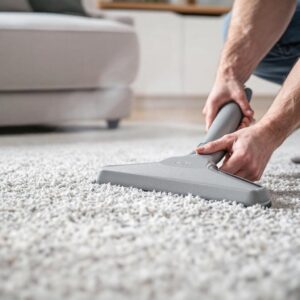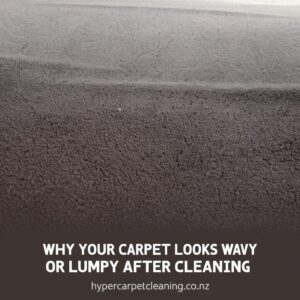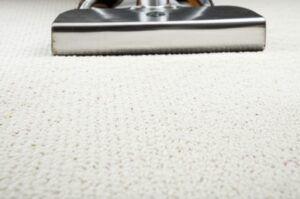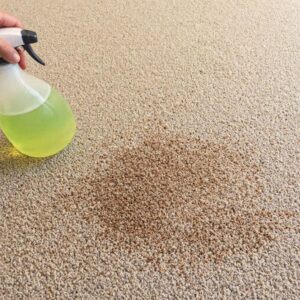Choosing the right carpet cleaning method doesn’t just affect cleanliness—it also impacts your indoor air quality, carpet lifespan, and maintenance costs. Whether you’re a homeowner or a business in New Zealand, understanding your options helps you make smarter, healthier decisions. The cleanliness, durability, and appeal of your carpet can all be significantly impacted by the method you choose for cleaning it. Knowing your options can help you maintain a healthier indoor environment. In this guide, we’ll also explore the Best Carpet Cleaning Methods.
Modern Carpet Cleaning Methods
Carpet cleaning needs vary, especially when it comes to carpet cleaning in Christchurch, where both residential and commercial clients seek professional, eco-friendly options beyond basic soap and scrubbing. In New Zealand, professionals offer diverse techniques—from low-moisture options to hot water extraction—to suit different carpet types, budgets, and individual preferences.
Types of Carpet Cleaning Methods
Hot Water Extraction (Steam Cleaning)
How it works: This technique injects cleaning solution and hot water into the carpet fibres. The contaminated water is then removed using strong vacuums – removing allergens and deep dirt.
Pros:
- Deep cleaning: gets rid of bacteria and grime, dust mites, pet dander, etc, that become embedded in the carpet;
- Widely available in NZ: It is everywhere – convenient for residential and commercial customers.
Cons:
- Longer Drying Time: Depending on humidity and air circulation, carpets can take anywhere from 6 to 24 hours to dry completely;
- May require professional equipment: Regular vacuums are typically insufficiently powerful for effective extraction.
Dry Carpet Cleaning
How it works: Using a specialized machine, dry compounds or cleaning powders are applied to the carpet and worked in. After absorbing dirt, these compounds are vacuumed away without needing water.
Pros:
- Minimal drying time: Carpets can be used right after cleaning because little to no moisture is involved;
- Suitable for delicate or moisture-sensitive carpets: For wool and natural fibre rugs that might shrink or become damaged by water-based methods, it’s perfect;
- Convenient for busy households or offices: Businesses and households can resume regular activities without interruptions.
Cons:
- May not be as clean as wet methods: Deeply rooted allergens or dirt in the carpet pile cannot be removed by surface cleaning;
- Can leave residue if not thoroughly vacuumed: Leftover powder can draw in new dirt – reducing the effectiveness of the clean.
Bonnet Cleaning
How it works: The carpet surface is lightly sprayed with a cleaning solution, and the dirt is absorbed by a rotating pad (bonnet). Instead of cleaning the deeper fibres, this method primarily concentrates on cleaning the surface.
Pros:
- Quick and inexpensive: This economical method offers a respectable surface cleaning, particularly useful in expansive commercial spaces with limited downtime;
- Suitable for routine maintenance in commercial settings: It is frequently used in hotels and offices to maintain the cleanliness of high-traffic floors in between deeper cleanings.
Cons:
- Doesn’t remove deep-seated dirt: it only cleans the surface;
- Can wear down carpet fibres with frequent use: Over time, carpet texture may be harmed by the friction caused by rotating bonnets.
Carpet Shampooing
How it works: A rotary brush is used to scrub the carpet after applying a foamy shampoo. The residue and the loose soil are vacuumed up once it has dried.
Pros:
- Visibly brightens carpet surface: This technique is helpful for aesthetic touch-ups before events or weekly/monthly inspections;
- Affordable for light-duty cleaning: It’s a fantastic choice for households on a tight budget seeking a simple refreshment.
Cons:
- Can leave sticky residue: Unrinsed shampoo can draw dirt and cause rapid re-soiling;
- Requires longer drying time: Depending on airflow and environmental factors, carpets with a high moisture content may take more than a day to dry completely.
Encapsulation Cleaning
How it works: A cleaning solution that crystallises around dirt particles is applied using this low-moisture method. The dirt and crystals are removed when vacuumed up after drying.
Pros:
- Fast drying: Carpets can usually be dried in 1-2 hours due to the low moisture content;
- Eco-friendly and low water usage: It reduces water waste and is appropriate for homes and businesses that care about the environment;
- Suitable for commercial carpets: Low-pile carpets in high-traffic settings respond well to this technique.
Cons:
- May not be ideal for heavily soiled areas: It might not be able to remove stubborn dirt or deeply ingrained dirt from neglected carpets;
- Requires specialized equipment: It will be more optimal if done by experts with access to commercial-grade encapsulation tools.
Foam Cleaning
How it works: Dirt is trapped and raised to the carpet’s surface using a special foam cleaner. Then the foam is extracted or vacuumed with less liquid.
Pros:
- More sustainable: This makes it safe for delicate carpet fibers by lowering drying times and water damage risks;
- Quick drying time: After cleaning, you can use the room more quickly because most foam options evaporate soon.
Cons:
- Not ideal for heavy stains: It might not offer the thorough cleaning required for stubborn or older spills;
- May require professional handling: Inappropriate use may result in residue accumulation or uneven cleaning.
Dry Powder Cleaning (Compound Cleaning)
How it works: Using a brush or machine, a biodegradable powder is applied to the carpet and worked in. The compound is vacuumed away after absorbing dirt and odours.
Pros:
- Dehydrated process: This technique is ideal for areas like wood subfloors or moisture-sensitive rooms where using water is dangerous or impractical;
- Ideal for quick cleans: It helps keep carpets in good condition between more involved professional services;
- Safe for all carpet types: Natural fibers and dyed surfaces are not at significant risk from the dry and chemical-free substance.
Cons:
- May need multiple passes for heavy dirt: To get satisfactory results, heavily soiled cases may require multiple treatments;
- Less effective for deep cleaning: Dirt accumulated in the carpet’s deeper layers or backing cannot be reached or removed using this method.
Comparison Summary:
| Method | Cleaning Depth | Drying Time | Moisture Level | Residue Risk | Best Suited For |
| Hot Water Extraction | Deepest | Long (6-24h+) | High | Moderate | Deep cleaning, heavy soil, allergies |
Dry Compound | Shallow-Moderate | Very Short | Moderate-High | Quick cleaning, moisture-sensitive | |
Encapsulation | Moderate | Short (1-2h) | Low | Low (if done well) | Maintenance, commercial, quick refresh |
Bonnet Cleaning | Surface Only | Very Short | Very Short | High | Cosmetic touch-ups, hospitality |
| Shampooing | Moderate | Long | Moderate | Very High | Largely outdated – Not recommended |
Dry Foam | Shallow-Moderate | Short | Low | Moderate | Light cleaning, delicate carpets |
Frequently Asked Questions (FAQ)
What is the most effective carpet cleaning method?
Hot water extraction (steam cleaning) is considered the most thorough method for deep cleaning and removing allergens.
Which method is best for wool carpets?
Click Here to Learn How to Clean Wool Carpet
Dry cleaning or dry powder cleaning is ideal, as these methods use little to no moisture.
Steam Cleaning vs Dry Cleaning: Which Is Better?
When choosing between *steam cleaning vs dry cleaning*, it’s important to consider your carpet type, how dirty it is, and how fast you need it to dry. Steam cleaning (hot water extraction) is widely considered the *best carpet cleaning method* for deep cleaning and allergen removal. However, dry carpet cleaning is faster, low in moisture, and perfect for delicate carpets or busy commercial areas.
Final thoughts
Every technique has particular advantages and disadvantages. Your lifestyle, cleaning objectives, and carpet type should all be considered. Speak with a local carpet cleaning expert for assistance in selecting the best course of action for your requirements.
Not sure which method suits your carpet? Contact a professional carpet cleaning service in Christchurch to get expert advice tailored to your space and carpet type.





